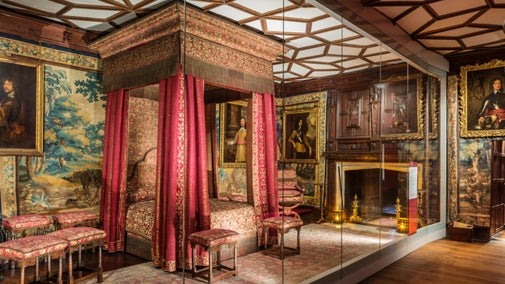Marks left within the fabric of the building show how life was very different for people living during the early 1600s, when Knole was bought by Thomas Sackville. People viewed the world differently as well as their place within it; we can see aspects of this through the marks left within buildings. A fear of witchcraft and evil spirits was rife and provided a direct link with the societal upheaval and troubles causing people to find fault and blame in the supernatural. To alleviate those fears, the practice of carving intersecting lines and symbols was used to create what was believed to be a ‘demon trap’, warding off evil spirits and preventing demonic possessions.
King James I was particularly interested in the supernatural, and this was heavily considered in the decoration of the King's Room. Thomas Sackville, while re-designing Knole was optimistic of a royal visit, with the foiled Gunpowder plot of 1605 there would likely have been a heightened awareness of the importance of protection from evil spirits. The Upper King’s room features numerous marks which lay hidden for centuries and include net and mesh designs. Evil spirits were believed to access rooms via windows, doors, and fireplaces, travelling through air. While you can shut windows and doors, with fireplaces it was not so simple, possibly explaining the focus of ritual protection marks surrounding fireplaces. What makes the Upper King’s Room unusual is the frequency of these marks and how often they appear in such close proximity. The vast amount of protection marks in this space is a direct result of the important visitor expected to stay.














